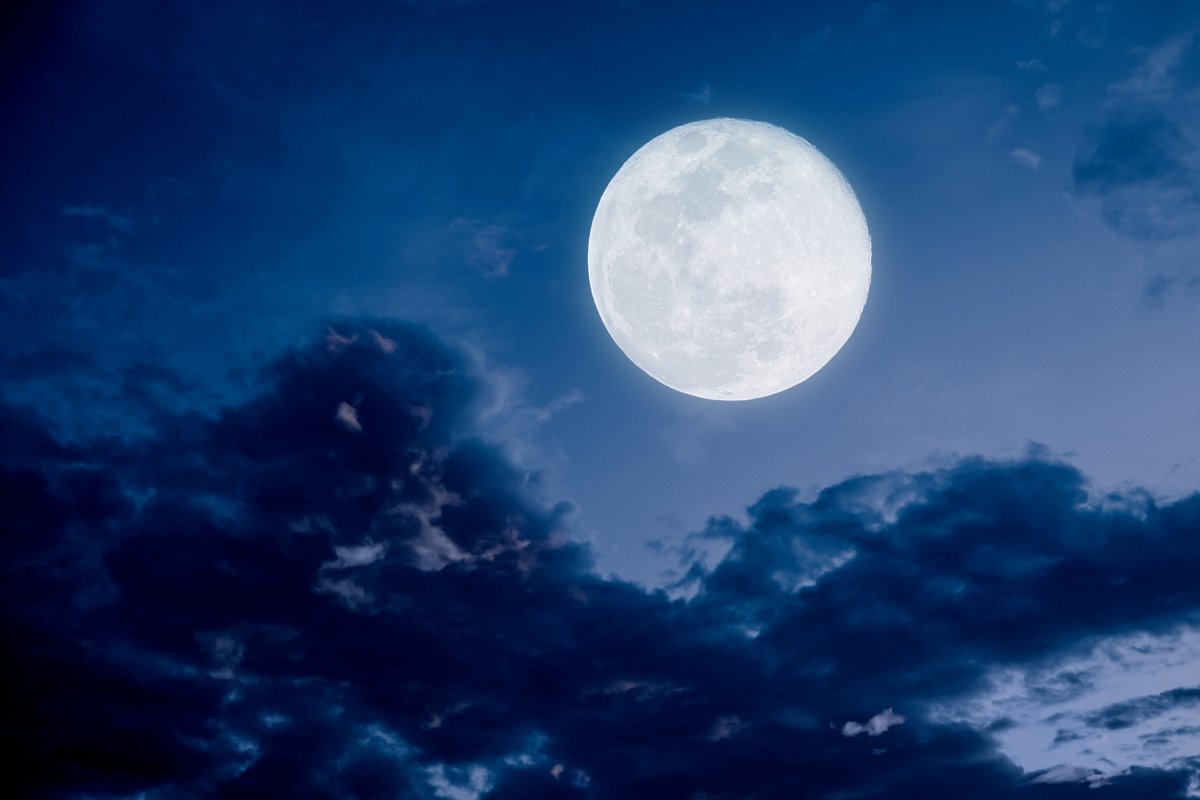Next week skywatchers will be able to see June's full moon, also called the strawberry moon, on Thursday, June 24.
The name "strawberry moon" is thought to have been first used by the Algonquin tribes of North America, according to NASA.
The space agency's Gordon Johnston, who writes monthly articles on lunar activity and other skywatching opportunities, wrote of the strawberry moon in 2020: "The Maine Farmer's Almanac first published 'Indian' names for the full moons in the 1930s.
"According to this Almanac, as the full moon in June and the last full moon of spring, the Algonquin tribes called this the strawberry moon. The name comes from the relatively short season for harvesting strawberries in the northeastern United States."
Johnston adds that, according to some reports, the name might refer to the moon's color at this time of year because—for northern parts of Europe at least—the full moon nearest the summer solstice "shines through more atmosphere than at other times of the year, making it more likely to have a reddish color."
Light that passes through more of the Earth's atmosphere does tend to appear red, which is what gives sunrises and sunsets their trademark glow.
Meanwhile, there are also many other names for the full moon in June. An old European name for it is the mead moon or honey moon, referring to an alcoholic fermentation process.
And The Old Farmer's Almanac states the full moon in June may also be called the berries ripen moon, the hot moon, and the egg laying moon.
NASA data shows next week's full moon will technically occur at 6:40 p.m. UTC (2:40 p.m. EDT), but to the naked eye, full moons can appear to be full for as long as three days, the National Radio Astronomy Observatory notes.
Gianluca Masi, founder of Europe's Virtual Telescope Project, has said he will be running a livestream of the strawberry moon rising above Rome, and has also claimed the moon will qualify as a supermoon—the last of 2021.
There are no official rules for when a moon qualifies as a supermoon and different outlets differ in their definitions. Generally, the term refers to a period of time when the moon is full and also particularly close to the Earth in its orbit.
NASA states the term typically refers to a full moon "that comes within at least 90 percent" of its closest approach to our planet. TimeAndDate.com uses the definition of a full moon that occurs when "the center of the Moon is less than 223,694 miles from the center of Earth."
In any case, the Virtual Telescope Project stream can be viewed on the project's website, scheduled for 3:00 p.m. EDT.
Correction 11:10 a.m. EDT 21/06/2021: This article has been updated to correct the time of the strawberry moon.

Uncommon Knowledge
Newsweek is committed to challenging conventional wisdom and finding connections in the search for common ground.
Newsweek is committed to challenging conventional wisdom and finding connections in the search for common ground.
About the writer
To read how Newsweek uses AI as a newsroom tool, Click here.








